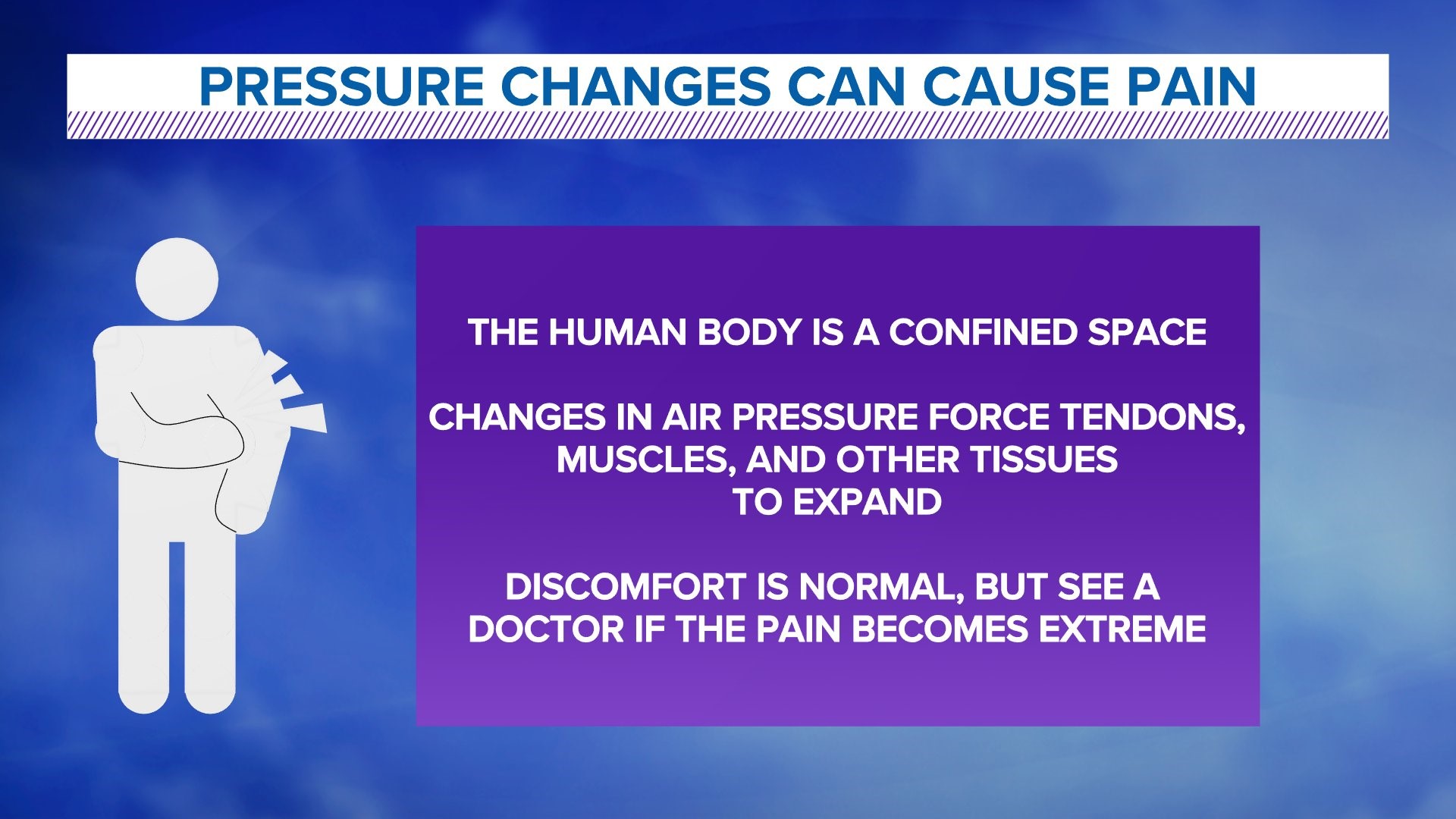DES MOINES, Iowa — When bitter-cold temperatures hit Iowa each winter, much like the ones this week, many complain of severe joint aches and pains.
Although these pains occur throughout the year, they seem to be exacerbated in the coldest days of winter.
Believe it or not, there actually a likely meteorological connection to why this discomfort exists.
According to physicians at the University of Chicago Medical School, there is no single explanation for the connection between atmospheric conditions and body aches or pains.
However, the most common assumption is that aches and pains relate to significant changes in barometric pressure.
The National Weather Service defines barometric pressure as "the pressure of the atmosphere as indicated by a barometer." Changes in barometric pressure are often felt when fronts and other weather systems move through the area.
High pressure is normally associated with calmer, quieter weather, while low pressure is connected to active, sometimes turbulent weather.
For the human body, changes in barometric pressure allow tendons, muscles and other surrounding tissues to expand. This expansion causes additional strain on joints, especially those affected by arthritis, primarily because the human body is already a confined space.
Doctors at the University of Chicago Medical School say this achiness is normal, but medical attention may be necessary if the pain becomes severe or unbearable.
To help reduce the affects of cold weather aches and pains, it's a good idea to build up muscle and bone strength through regular exercise, even during the harshest winter months.
Even if this physical activity is something as simple as a quick walk around the block, it can be helpful.
Of course, when it's particularly frigid, be sure to dress in plenty of layers.
Experts also say applying heating pads to pained areas is best, as heat helps relax your muscles more than ice packs or cooling pads.
Clearly the winter in Iowa isn't easy, but spring is right around the corner.
As the temperatures warm up, hopefully the aches and pains will begin to subside a bit, too.
Watch more Local 5 Weather Lab content on YouTube

